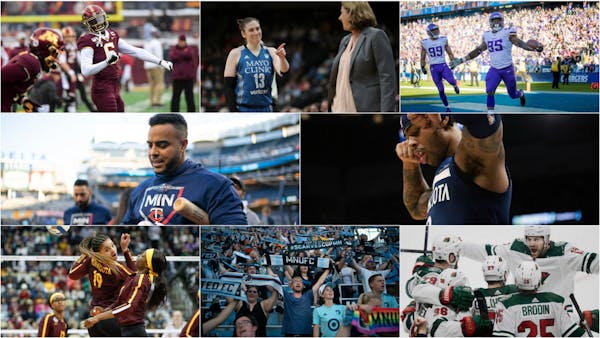Widespread optimism exists that college basketball won't suffer the same fate as football during the pandemic.
With the Big Ten and Pac-12 canceling fall sports last week, college basketball officials are studying those decisions, determined to play safely within the normal 2020-21 season schedule. There is overwhelming support from coaches, NCAA leadership and analysts to follow the successful path of the NBA and NHL bubbles.
"If we have to do a bubble model and that's the only way we can do it," NCAA President Mark Emmert said Thursday, "then we'll figure that out."
The Big Ten and Pac-12 don't agree on when their college basketball teams should open the season. The Pac-12 chose to not have competition until Jan. 1.
Gophers coach Richard Pitino hasn't heard any serious chatter from his peers within the Big Ten about getting rid of the nonconference season.
"I think there is still very much a push to be able to pull it off," Pitino said Friday. "And I'm only speaking of my sport. I think we want to play. The players want to play. It's how can we figure it out the right way."
Pitino's regular-season opener is scheduled for Nov. 11 against Albany at Williams Arena. An exhibition game with Division II Concordia (St. Paul) on Nov. 5 has already been called off, sources told the Star Tribune.
If the Gophers play any nonleague or league opponents this year, the time to start that would be right after Thanksgiving and during the Christmas break, when most students aren't on campus, Pitino said.
"What everybody seems to be trending toward is, can we pull something off when all the students go away and go back home?" Pitino said. "Does that mean we can figure out a season probably in the Big Ten? Maybe we can salvage a Big Ten/ACC Challenge within those six, eight weeks when the students are gone. Can we create some sort of a bubble? It worked for the NHL and NBA. That's the hope. I think it makes a lot of sense."
University of Illinois computer science professor Sheldon Jacobson, a well-known researcher in areas such as public health and college sports, released data in June stating college football could see three to seven deaths nationally from the coronavirus, based on a spiking number of positive cases at various programs at the time.
Jacobson updated his estimate recently to zero deaths after cases appeared to drastically decrease to about a 6% infection rate among the FBS' 13,000 players, according to Sports Illustrated. For college basketball, Jacobson pointed out the risk of death is likely even lower from COVID-19 even if the infection rate throughout the sport was much higher than football.
"I looked at men's and women's basketball to see what type of risks we're looking at," Jacobson said. "It turns out overall, primarily because of the smaller teams, you could end up having a much safer environment with college basketball than college football. We're seeing that right now with the WNBA and NBA. You have smaller teams. It's easier to maintain the integrity of the bubble."
A chance to play for a national championship. That would be a welcomed sight for players and coaches who saw those dreams crushed before they started when the NCAA tournament was abandoned last season. Next March, Minneapolis is scheduled to host an NCAA regional at Target Center. There are financial ramifications for cities that lose such high-profile sporting events.
With the millions also not flowing in from football this fall, college leaders are turning their immediate attention toward how to save March Madness. The NCAA's most lucrative enterprise is worth nearly $1 billion in revenue that filters down to every program.
Bubbles could save the sport known for bursting bubbles on Selection Sunday. But how would the NCAA tournament work if not all 353 Division I teams played a full schedule? What happens if the Big Ten plays nonleague games and the Pac-12 or other leagues do not?
"The winners will be the leagues that play nonconference games and build up their résumés," ESPN NCAA tournament bracket analyst Joe Lunardi said. "The leagues that don't play nonconference games are going to have an extremely hard time getting any at-large bids."
Bracket Joe shares the hope of everyone involved with college hoops that players can be safe but experience the real thing this season.
"Maybe schools will opt out in certain parts the country," Lunardi said. "There's obviously a big enough pool of schools that will be able to and want to play. I think it will all shake out in a way that actually makes more sense than it appears right now."




